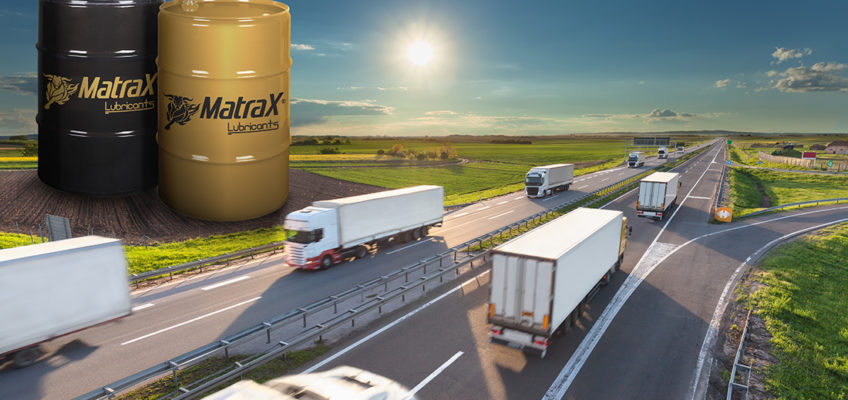Despite their lesser media appeal than the automotive industry, the heavy engine’s industry (trucks, engineering machinery, tractors, etc.) is one of the most sophisticated, technologically speaking. The role of the lubricant and the way this responds to the latest technological demands is key. In this respect, the needs of a heavy engine are different from those of a car and the lubricant used must tailor for those needs. It is because of this that MatraX Lubricants features a range of products specifically designed for such machinery, among which we find the MatraX Heavy InfluX 5W30 UHPD and the MatraX Heavy Synthesis LSAPS 10W40.
Two of the distinguishing characteristics of heavy engines as compared to those of ordinary cars are the temperatures that these are exposed to and their increased production of ‘carbon’, with the ensued risks of deposit build up. These are two good reasons to give careful consideration to the lubricant that we are going to use. MatraX Heavy Influx and MatraX Heavy Synthesis LSAPS are more thermally stable, which makes them particularly suitable to support high temperatures as well as conserving a better pumpability under low temperatures. As a result, they facilitate the cold start, protecting the engine against the resulting wear, even under extreme temperatures (-30º).
When it comes to the propensity of heavy engines to generate greater amounts of internal ‘dirt’, MatraX Lubricants are excellent at protecting and keeping the engine clean, preventing the build up of deposits.
Fuel efficiency
These are not the only benefits of using a synthetic-based lubricant such as MatraX Heavy Influx and MatraX Heavy Synthesis LSAPS for latest-generation engines. Their high quality and careful formulation allows for a lower consumption of oil and increases the engine’s fuel efficiency.
Moreover, MatraX always operates in consideration with environmental impact issues and within the strict abidance of emissions’ legislation. It is all thanks to its lubricant’s advanced formulation and the use of additives which are low on sulphated ash, phosphorous and sulphur (Low SAPS), which makes them compatible with the most modern post-treatment systems.





Leave a Reply